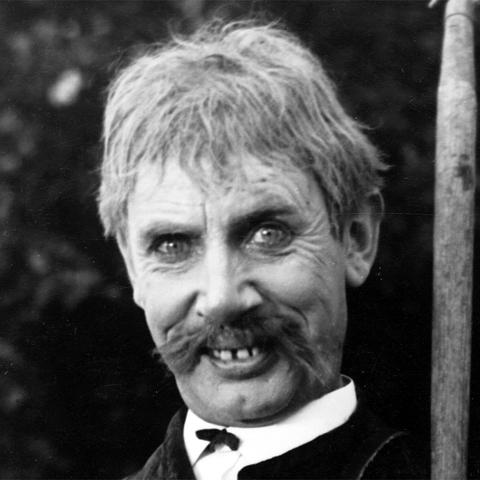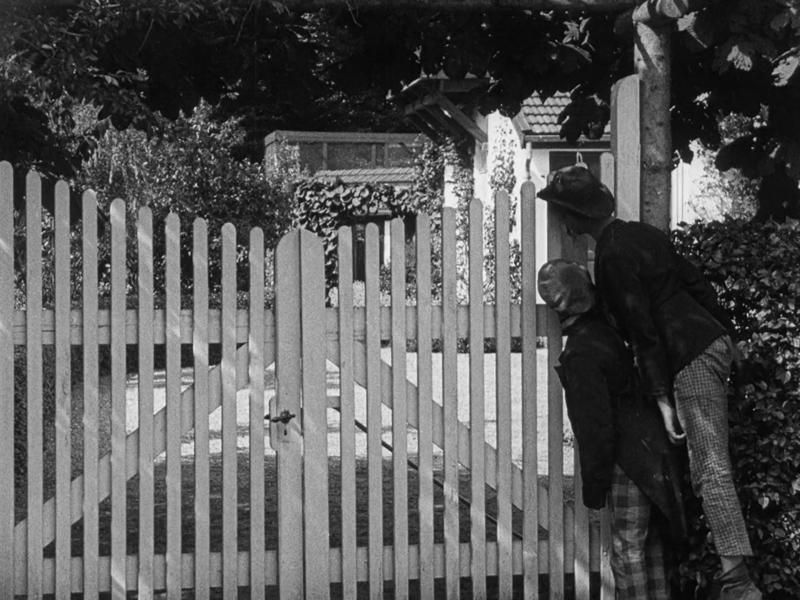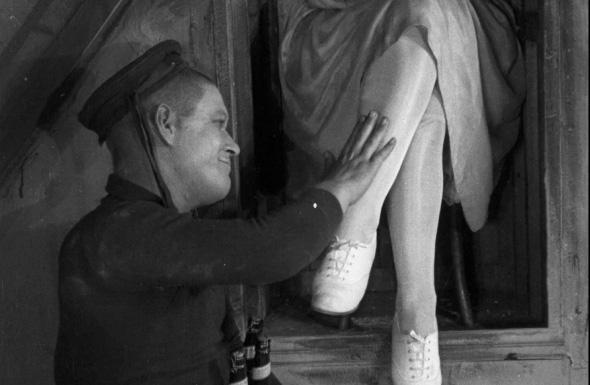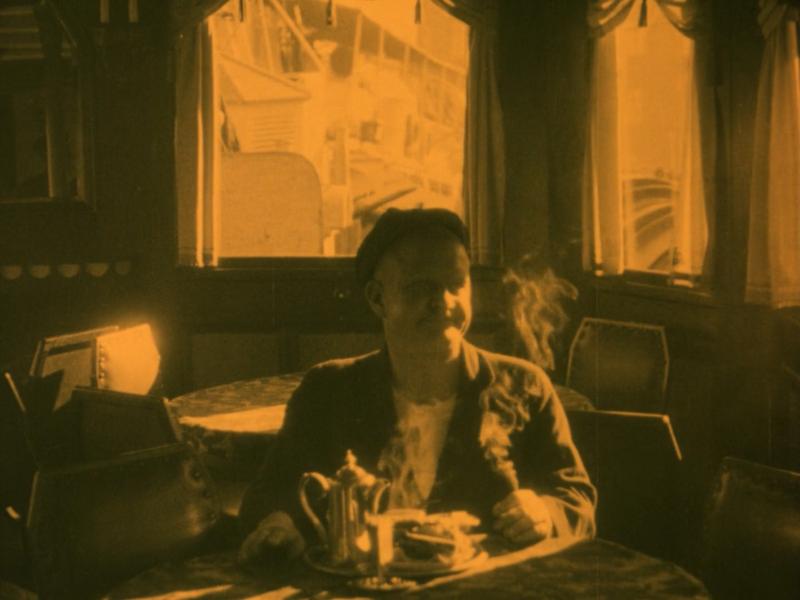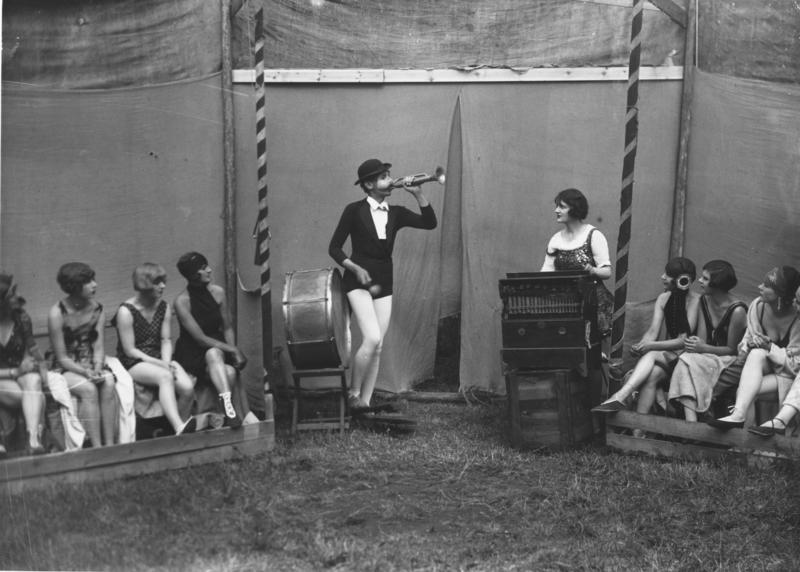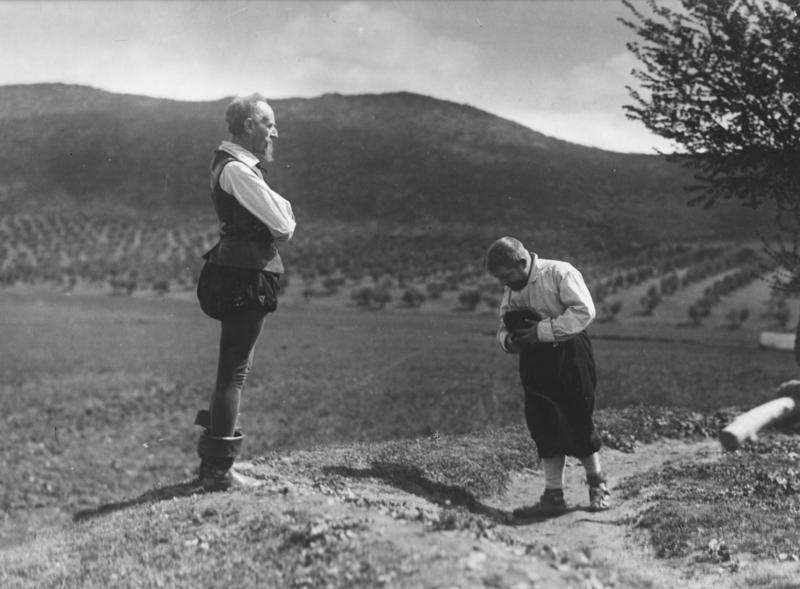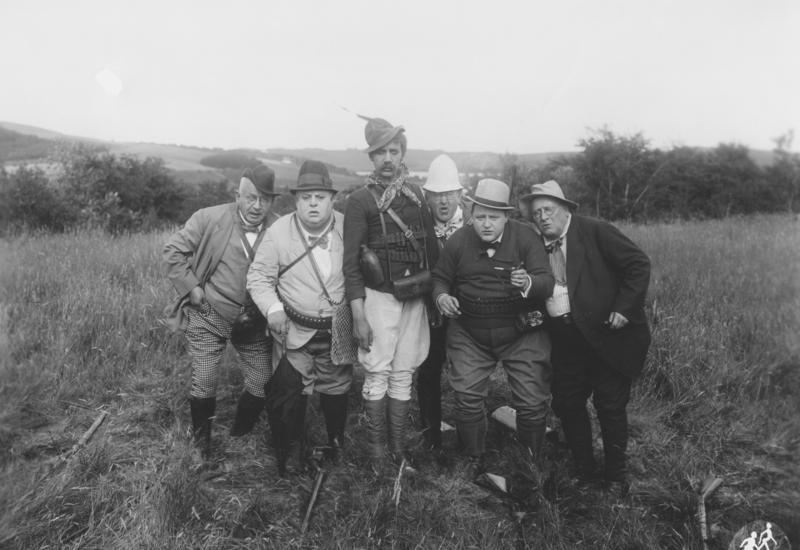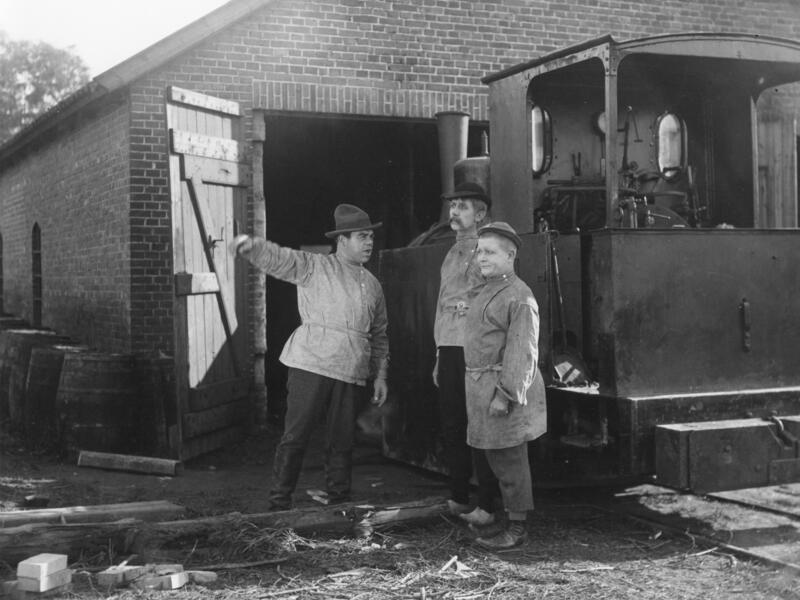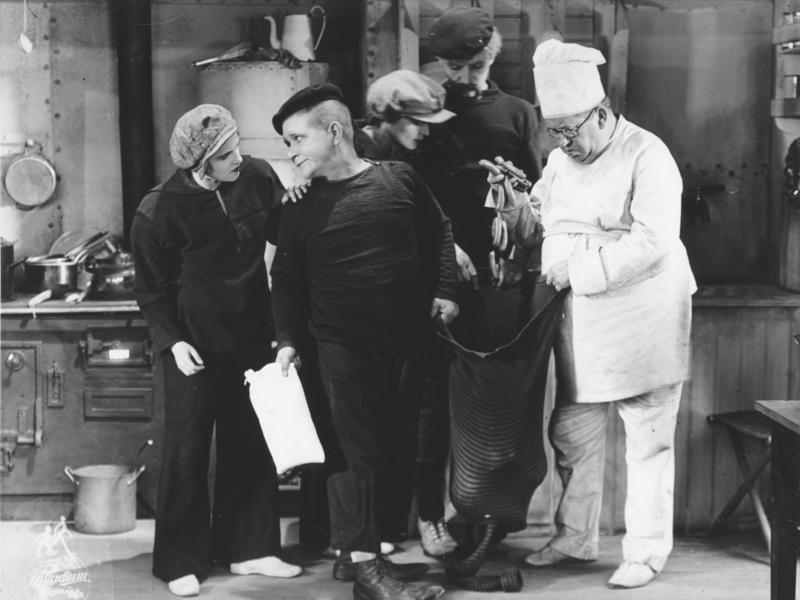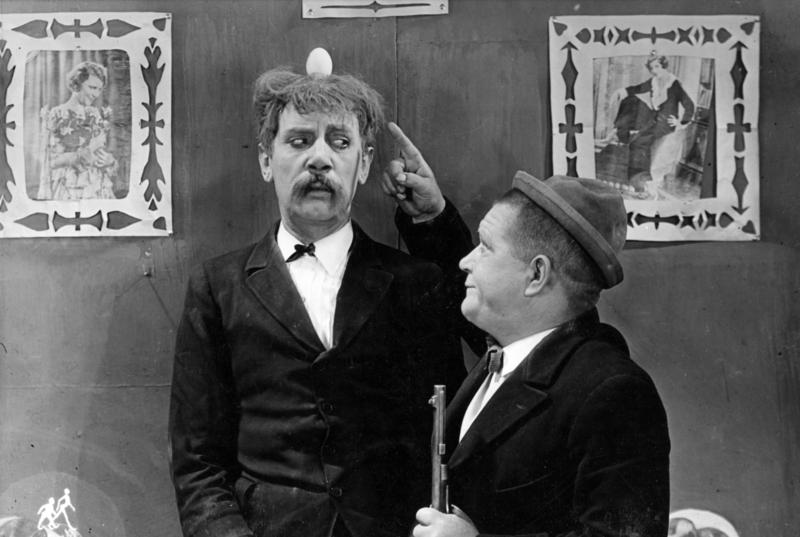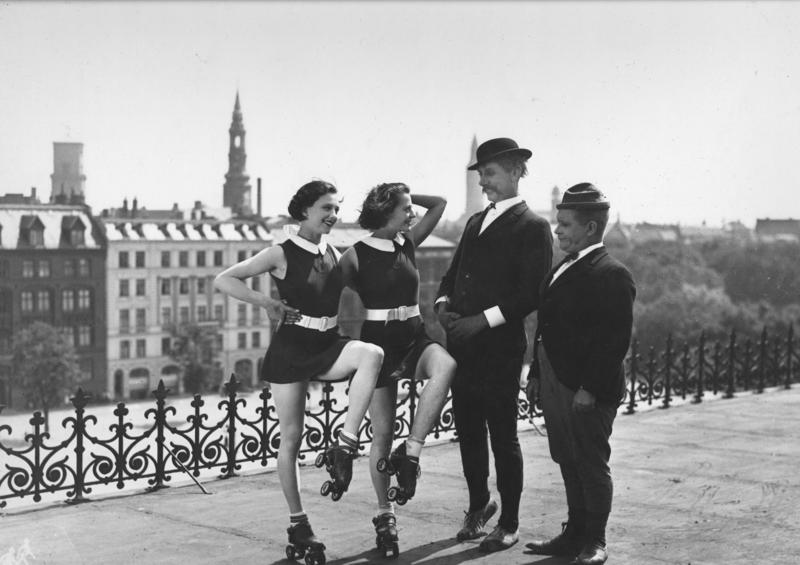The comedy duo Pat and Patachon were the undisputed favourites of Danish moviegoers in the 1920s – and well into the sound film era, too. Hugely successful, they sold heaps of tickets in Denmark and beyond. Not least in Germany, where they achieved permanent star status and even became much-loved faces on television when their films were rebroadcast in the 1960s and 70s.
Jannie Dahl Astrup, Film Archivist | 10 November 2023
“More than 20,000 Berliners pay tribute to Pat and Patachon: The Danish ‘Kino-Lieblinge’ attend the Six-Day Race at the Sportpalast”. This heading in the Danish newspaper B.T. on 8 November 1926 firmly establishes, in large, bold type, just how great a success the Danish farce director Lau Lauritzen Sr. had achieved with the duo Carl Schenstrøm and Harald Madsen in the roles of Pat and Patachon. But how did the comically mismatched pair become such a big-selling export hit for the film company Palladium, trailing a wake of glamorous events, droves of people stampeding at railway stations and triumphant motorcade tours around European cities? The achievement is even more astonishing given that this happened during a time when the so-called golden age of Danish film was long gone.
Toys, coffee and shoe polish
Pat and Patachon were frequently compared with contemporary international film stars in Danish media. Back in 1922, just one year after their debut together on the big screen, Madsen and Schenstrøm were dubbed “the Danish Chaplins” (Fredericia Socialdemokrat, 16.1.1922) in their shabby vagabond costumes, while in 1925 Politiken ran a telegram from Vienna describing how the city’s reception of the two Danish film stars equalled the furore at the Hollywood couple Mary Pickford and Douglas Fairbanks’ visit to Copenhagen the year before. Of course, newspapers – then as now – have a penchant for sensationalist and impactful headlines, yet press photographs and cinema repertoires confirm the great popularity of the two film characters.
Schenstrøm and Madsen were met by hordes of wildly excited film fans wherever they set foot, and cinemas around Europe screened their films to full houses and over many weeks. Quite simply, the unassuming and lovably naïve types were outright box office hits back in their day. In Munich, for example, cinemagoers had the opportunity to buy tickets for virtually all of the films produced with Pat and Patachon from the mid-1920s to the mid-1930s1. In 1927 alone, audiences could choose between fifteen different Pat and Patachon films screened in cinemas around the city. These included At the North Sea (1927), which, with the action set by the roaring North Sea and with Pat and Patachon at peak comic form, stands out as one of Palladium’s best and most enduring works. The pair were everywhere: on the big screen in cinemas, as guests of honour at premieres, starring in their well-known leading roles in films produced outside of Denmark, as figurines on toy store shelves, in newspaper headlines and in the form of numerous travelling imitators who made a living by pretending to be the short, stout Madsen and the tall Schenstrøm. If the fancy should take you, you could even drink your coffee from a Pat and Patachon coffee set or polish your shoes with Pat and Patachon shoe cream.
The supporting act and the circus clown
Before they rose to the peaks of fame and were hitched to the promotion and merchandise wagons of directors, production companies and distributors along the way, Pat – Carl Schenstrøm – was a hard-working supporting actor in Lau Lauritzen’s farce ensemble at Nordisk Films Kompagni, while Patachon – Harald Madsen – made people laugh in his position as experienced circus clown in Cirkus Miehe and later in Cirkus Schumann. The latter had a permanent affiliation with the Circus Building in Copenhagen, where the large cinema known as World Cinema took over when the circus season ended.
Operating in the field where film, circus and cinema operation intersect, the Palladium film company was established in Hellerup in 1919; first as a Swedish-owned enterprise with Danish interests and creatives in front of and behind the camera. The enterprise became fully Danish when director Lauritzen, together with Svend Nielsen, then head at World Cinema, took over the company and focused entirely on comedies, specifically on Lauritzen’s newly launched film series about the vagabonds Pat and Patachon. The very first film to feature the two characters had not yet fully found its voice. While the lanky Schenstrøm starred as Pat, he was flanked by the diminutive Aage Bendixen, who thus became the first Patachon in the Swedish Palladium film Love and Burglars (‘Landsvägsriddare’ (1921)), which Lauritzen directed.
Triumph in Germany
The experienced Lauritzen, who had directed more than 200 short farces at Nordisk Film alone, quickly established a sustainable formula for his new film duo. Longer films with fuller narratives allowed Schenstrøm and Madsen, who took over from Bendixen after the first film, to develop their characters and refine their chemistry and facial expressions. And when Palladium entered into an agreement with the German film merchant Lothar Stark2 in 1923, thereby ensuring wide distribution of the company’s films – not least in Germany – the international career of Pat and Patachon took off in earnest.
With ‘He, She, and Hamlet’ (1922), Palladium made its foray into Germany. They did so in Berlin’s vast cinema palace Marmorhaus on Kurfürstendamm, from where the press sent telegrams home to Denmark about the film’s compelling success. Responding with great rapidity, Palladium quickly ran full-page ads in German industry magazines, incorporating extensive quotes from reviews printed in connection with the premiere. In the Danish press, Lauritzen boasted quite openly about the Berlin success: “At the moment, ‘He, She and Hamlet’ is playing in the ‘Marmorhaus’ in Berlin – to full houses and in its fourth week, although this is the slowest time of year. And at the same time, twenty other film theatres show our works all over Germany” (B.T., 10.8.1923).
Having been renamed ‘Pat and Patachon’ (from the Danish ‘Fyrtårnet og Bivognen’) for the German-speaking market by Palladium’s German partner, Lothar Stark3, the pair achieved enormous popularity and popular support in the wake of the success of ‘He, She and Hamlet’. Thanks to Lauritzen’s dependable production rate of four Pat and Patachon films every year right up until 1932, Palladium was never short of films to release in cinemas. And even on the eve of the definitive breakthrough of ‘talkies’, silent films starring Pat and Patachon still attracted German audiences in great numbers. The Mannequins (1929), where the duo is joined by Marguerite Viby (in her film debut!) and Nina Kalckar, was among the most watched silent films in German cinemas in 1930. Schenstrøm and Madsen were everywhere: they appeared as giant advertisements on the façades of movie palaces and on the covers of the most popular film magazines. And – perhaps most crucially – the two Danish actors appeared appealingly down-to-earth and accessible to their thousands of fans. Schenstrøm and Madsen’s travel activity, especially in Germany and Austria, testifies to the enormous amount of work that went into keeping the film audience eager and enthusiastic.
Pre-arranged havoc
The two actors travelled in connection with their numerous foreign film productions (a total of thirteen in the years between 1925 and 1937), where they would typically stay abroad for several months. On top of this, they also went on longer tours around Europe, promoting their films as guests at premieres, making appearances on radio broadcasts and at official receptions at ambassadors and envoys. People from all walks of life wanted a piece of the two good-natured vagabonds, and Schenstrøm and Madsen dutifully showed up every time (as per their contractual obligations); often at the risk of injuries amid the manic crowds.
As such, Hamburg was awhirl when the city welcomed the two actors in 1931 as part of the promotion of their first talkie, ‘1000 Worte Deutsch’ (1930). The fact that the two Danish silent film stars’ first-ever sound film was a German production testifies to the strong anchoring that Pat and Patachon had achieved in German film culture and in the minds of cinemagoers through their persistent presence. The visit to Hamburg, which spanned two days in January 1931, reinforces the point. Prior to the visit, the city’s newspapers had printed welcome greetings to Pat and Patachon in both Danish and German; they even printed details on when the pair were expected to arrive at Hamburg’s main railway station, including the platform number. In other words, they provided a detailed guide on where and when to show up for anyone wanting to give Schenstrøm and Madsen a jubilant welcome. Politiken reported “20,000 cheering people” (11.01.1931), while the Hamburger Anzeiger (10.01.1931) estimated a more conservative figure of 10,000. In his memoirs, ‘Fyrtaarnet fortæller’, Schenstrøm recalls this particular visit and the enormous attention, which he describes as “pre-arranged havoc”, with mixed feelings: “We got sick and tired of it in the end, but it was part of the business” (Schenstrøm 1943, 134).
Pat and Patachon fürever and ever
The fame and status as Denmark’s Chaplins, Germany’s ‘Kino-Lieblinge’ and heroes of popular cinema in many other countries came at a price. For Carl Schenstrøm and Harald Madsen, it required back-breaking work in front of the cameras – as well as following press tours, which Palladium and the company’s partners arranged in droves for the comedy duo.
However, the hard work did bear fruit and continued to do so well into the era of sound film and even television. Pat and Patachon proved to have a particularly enduring popularity in Germany, not least due to popular TV shows in the 1960s and 1970s where the original films were screened in heavily cut, sped-up versions with humorous speak and scores typical of the era4. The broadcasts rarely left much room for the gentle, good-natured humour of the original films where the duo’s distinctive features were not so much grand gestures and lightning-quick slapstick timing but rather Madsen and Schenstrøm’s special chemistry, where eye rolls, small slaps and patient physical comedy all came together perfectly. Nevertheless, a new generation embraced the two Danish vagabonds as a peculiarly charming comedy curiosity – and to this day the term ‘Pat und Patachon’ still lives on in German-speaking culture to describe a pair of unusual disparity in terms of height and stature.
Notes
1) Astrup, Jannie Dahl (2022). Fy og Bi: Et transnationalt filmfænomen. PhD dissertation, University of Copenhagen.
2) See Jannie Dahl Astrup’s article on two figures who were central to Palladium’s international success, World Agents and Mighty Filmmakers – The Transnational Business Relations of Palladium, in Kosmorama #276.
3) At an earlier stage of his career, Lothar Stark was associated with the film company Cines, which among other things was responsible for the distribution of films featuring the comedian Raymond Frau, whose film character Kri-Kri was also known under the name Patachon. This may be a possible connection to the origin of the German/international names of ‘Fy og Bi’.
4) Aping, Norbert (2021). Es darf gelacht warden. Von Männern ohne Nerven und Vätern der Klamotte. Lexikon derdeutschen TV. Slapstickserien Ost und West. Marburg: Schüren.
Jannie Dahl Astrup, Film Archivist | 10 November 2023
Pat and Patachon introduction video
An audiovisual introduction to Pat and Patachon by Liv Thomsen / Historieselskabet.
